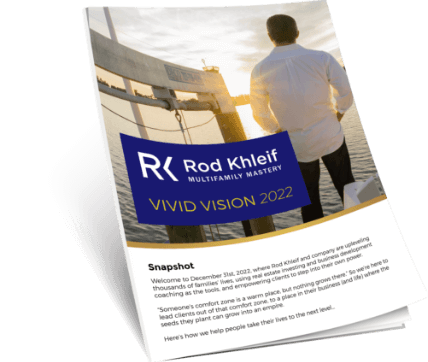Buying an investment property without considering the Capitalization Rate is like getting a physical without checking your blood pressure. The Cap Rate is a standardized assessment tool used by investors to help determine the financial health of an investment. But does it tell the whole story? What does the capitalization rate really tell you?
How to Figure a Property’s Cap Rate
Before we discuss what the cap rate tells you about an investment, we need to first discuss how to figure out the rate. The formula is as follows:

What Does the Cap Rate Tell You?
The capitalization rate can be useful in analyzing an investment in several areas.
Return on a Cash Investment
The cap rate helps an investor determine the percentage of return they can anticipate if they purchased the investment property for cash assuming the income and value remain constant.
Investment Comparison
It can also be a useful tool to compare different types of investment properties. For example, if an apartment building is listed for $1,250,000 and has a NOI of $92,500 the cap rate would be 7.4%. Whereas if a mobile home park is listed for $435,000 and is generating a NOI of $37,500, the cap rate is 8.6%. The higher the cap rate the better the return on the investment making the mobile home park a more appealing option – at least at this point in the analysis.
Risk Assessment
The cap rate has a risk return buried in the rate. If an investor has $1,000,000 to invest, they could place it all in 10-year treasury bond and be guaranteed a 3% return on their investment.
If they purchased an apartment building that generates a $100,000 annually, they would get a 10% return on their investment. The 7% difference reflects the additional risk associated with managing an apartment building compared to the bond investment.
What a Cap Rate Does Not Tell You?
There are limitations to the capitalization rate. Just as a simple blood pressure test can give a doctor a general idea of your health, so the cap rate is only a generalized indicator. There are factors than can alter the accuracy. In actuality, there are times when the cap rate should not be used at all.
Irregular Income
The capitalization rate assumes that the NOI will remain constant. If the property’s net operating income stream is complex – such as with percentage based rent rates – the cap rate will not be able to provide an accurate picture. The more complex Discounted Cash Flow (DCF) analysis will need to be completed.
Cash-on-Cash Return
A cap rate assumes a cash purchase. An investor buys an apartment complex for $8,500,000 cash and it generates an NOI of $725,000 creating a cap rate of 8.5%. But what if the investor needs financing? Financing will affect the investors ROI. The cap rate will then need to be split between the return on the lender’s investment and that of the investor.
If the investor puts 25% down and finances the rest ($6,375,000) on a 25 year amortization at 5.05% it creates an annual debt service of $449,448. The lender’s return on this property investment (known as the mortgage constant) is 7.1% ($449,448 / $6,375,000).
The NOI to the investor after the mortgage would be $276,897 creating an investor’s equity return of 13.0% ($276,897 / $2,125,000 down payment). This is also known as the cash-on-cash return.
When weighted based on the loan-to-value/equity position, the cap rate is verified.
- Loan-to-Value 75% x 7.1% mortgage constant = 5.3%
- Equity Position at 25% x 13.0% equity cap rate = 3.2%
- Capitalization Rate (5.3% + 3.2%) = 8.5%
This splitting of the cap rate into the lender’s cap rate and the investor’s cap rate is called the Band of Investment Method. It can be used to back into a purchase price once the lending terms are set and the investors desired ROI is known.
The cap rate is a very useful investment analysis tool but investors must realize its limitations. Inaccurate income or expenses will dramatically affect the capitalization rate. So you will need to verify any Profit and Loss statements first.
Additionally, remember that the Cap Rate reflects a one year return on a stable income with a cash purchase. Knowing what the capitalization rate really tells you will help you to make better investment decisions.
At my Bootcamps, I cover topics like this in great detail with many real life examples. Tickets are now on sale here.




